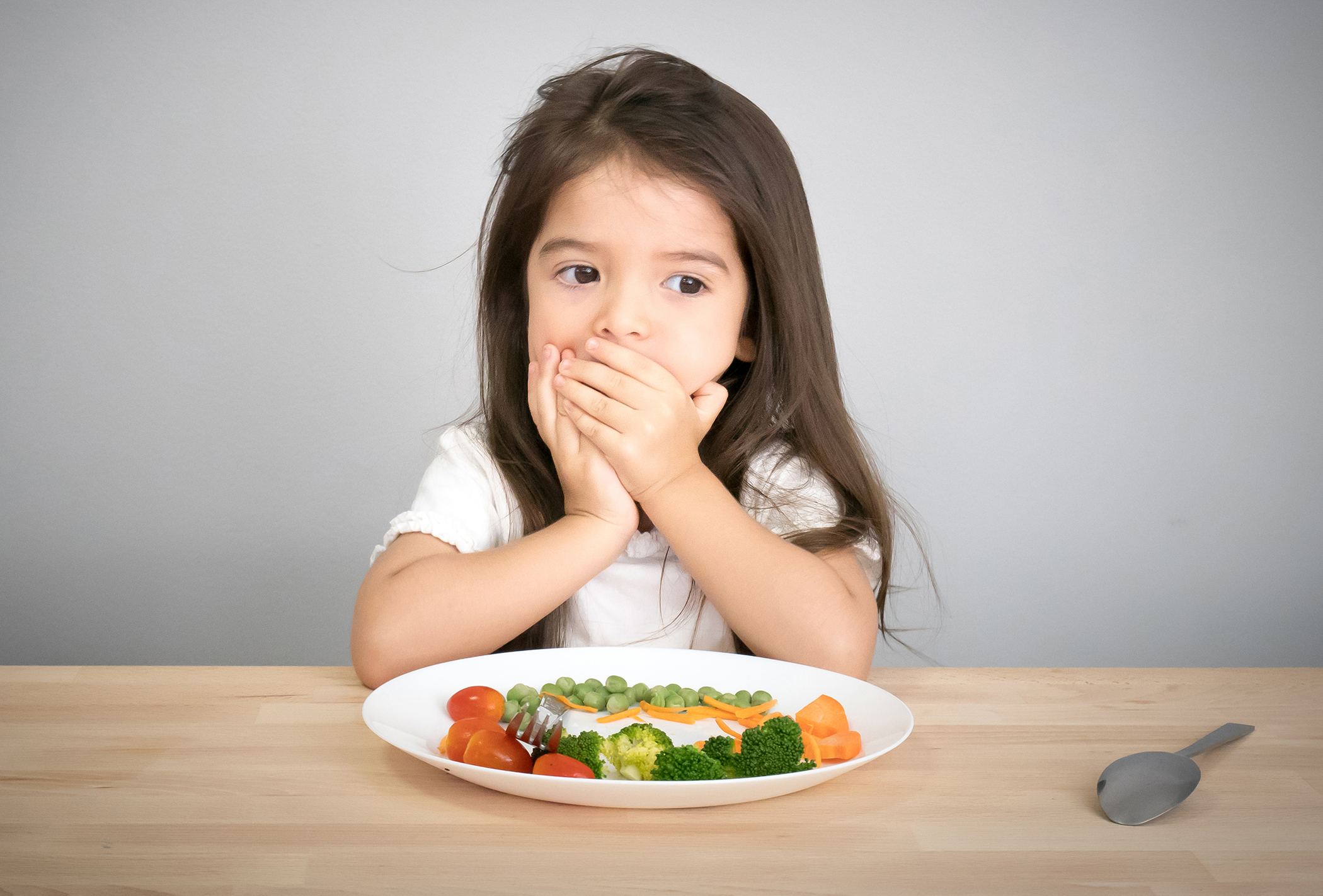Dealing with picky eaters can be stressful. We’re here to help you expand your mealtime horizons with some pro tips from a registered dietitian.
(*Toddler picks up broccoli and throws it off high chair. Mom sighs as she heads back into the kitchen to cook mac and cheese because at least they’ll eat that.)
So many little ones have formed allegiance to the “beige brigade” (highly-processed carbs like chicken nuggets, pasta, bread and fries). Getting things like fruits and vegetables into the mix is a battle many parents cry uncle to.
Registered dietitian and twin-mom Ahuva Magder Hershkop says there are ways to get your kids out of the trenches, and that being picky is “a very normal and natural process.”
Freedom of choice
She says choice plays a huge role in picky eating. Everyone likes having choice, but kids have very little choice in their day other than what they do at mealtime.
“They’re not choosing the clothes they’re going to wear outside in the winter, but they can choose to close their mouths at dinner and there’s nothing you can do about it,” Magder Hershkop says.
And why the beige foods?
“Number one: Those foods are delicious,” she says. “Number two: They’re more predictable.”
She explains every berry can taste different. Every vegetable can taste different. Foods that aren’t sweet and high in fat naturally take longer to get used to.
Here are some of her tips to make mealtime more manageable:
Exposure is enough:
“Every time our kids see food is a learning experience. A lot of parents find it frustrating when their kids aren’t eating foods on day one, but we have to remember touching new foods and seeing new foods are also worthwhile experiences.”
Feed your kids when they’re actually hungry:
Often kids are grazing or having lots of snacks throughout the day or parents are leaving food out for really long periods of time and kids aren’t having the time to get hungry.
“When you’re not super hungry, if someone brings you something super delicious, you’d eat it, but if it’s not your favourite, you wouldn’t. If there’s macaroni and cheese, you’ll still eat it. But if there’s broccoli, you won’t.”
Create a mealtime routine:
“You should create a meal structure so it’s not just snacking whenever, it’s getting into routines around when food is available and when it’s not.”
Involve the kids in meal prep:
Take them to the grocery store with you and let them pick out new foods they want to try. Bring them into the kitchen to be part of the cooking process. Whether it’s picking the leaves off herbs or doing some safe chopping with a parent, the kids will be more interested in trying a finished product they had a hand in creating.
Celebrate the “spit outs”:
“We tend to only celebrate when kids actually eat the food, but it’s worth celebrating the fact they tried it (even if they didn’t like it), or even that it’s on their plate and they had a positive experience seeing or touching it.”
Serve new foods next to old favourites:
Introduce new foods alongside ones you know they like. “It’s like a friend of a friend. When you go to a party with a friend, your guard is down a little more. Having new foods on the same plate as ones they are familiar with helps reduce the stress for them. Even if they don’t eat the new food, the exposure is still worth it.”
Hide Foods (but only for short-term results):
“The only reason we eat broccoli and we don’t eat leaves off of trees is the fact that you’ve seen broccoli your entire life. Seeing it and being comfortable with that food has a lot of importance. Sure you can puree the broccoli and put it in the mac and cheese for the extra nutrients, but when we’re only hiding, we take those opportunities away from our kids.”
Change it up:
Grill it, bake it, fry it, steam it. French fries and roasted potatoes are considered different foods. Your kids may like one preparation and not another. Experiment!
Don’t bring your stress to the table:
Less stress = mealtime success. If you’re stressed, your little one will likely sense it and can become stressed out too. Try to come to the table calm and cool for a positive experience all around.
Magder Hershkop says if you’re finding meal time is more stressful than a 5 out of 10, it’s worth doing a check-in with a dietitian or your doctor to make sure everything is on the right track.
You can download her “Stress-free Mealtime with Your Child” cheat sheet resource for free here.
*Opinions expressed are those of the author, and not necessarily those of Parent Life Network or their partners.



 Sponsored
Sponsored




